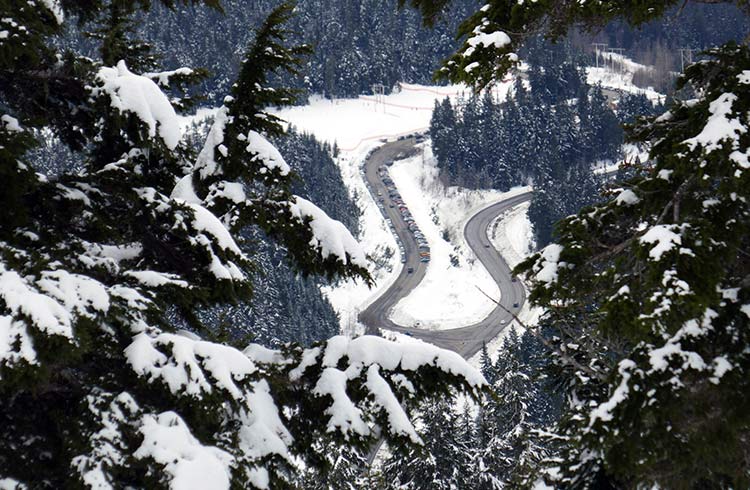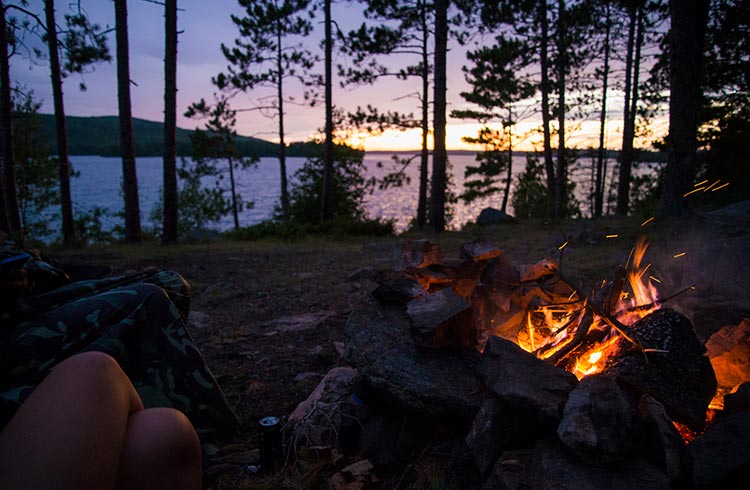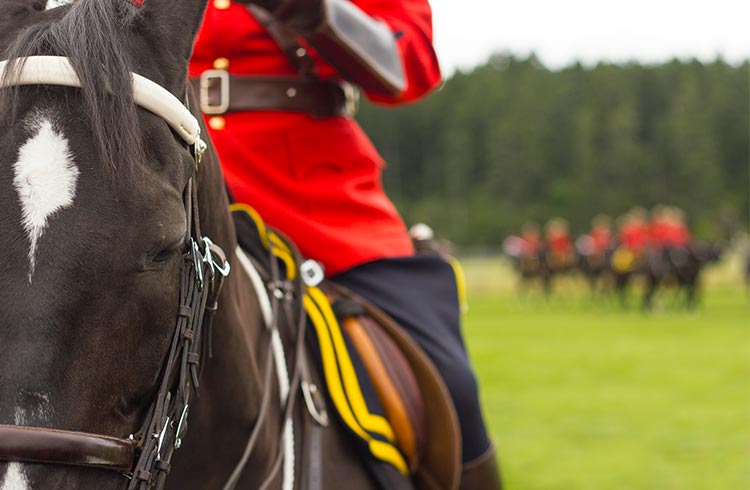Driving in Canada: Tips & Advice for Safer Road Travel
Don’t let icy conditions, snowstorms, and steep mountain passes leave you shaking behind the wheel on Canada's (sometimes dangerous) roads. We debunk the hazards and share some tips to keep you and your rental vehicle safe.
 Photo © iStock/Hailshadow
Photo © iStock/Hailshadow
Driving tips for Canada
You'll find that each province and territory can have its own traffic and safety laws.
- Seat belts are compulsory
- You can generally turn right on a red light however in some places you can only turn right on a green light, and in some parts of Quebec, right turns on red lights are not allowed.
- Take out full car insurance cover when you hire a vehicle
- Always obey speed limits and take extra care on country roads, and look out for wild animals
For more information on road conditions and safety tips for driving in Canada see the Government of Canada, the Canadian Automobile Association and the Travel Canada websites.
Cold weather driving is fine, as long as your car is in good condition and you take it slow. The best way to keep your grip is to take it easy on the accelerator and the brake, making no sudden changes.
However, no matter how silky your starts and stops are, you can't assume it's all going to be smooth sailing. You should be prepared to spend some time moving through deep snow or around obstacles.
Black Ice
Black ice is a big concern on Canada's roads. During winter, asphalt is generally a grey-white color. If you see a patch of shiny black bitumen, it's likely to be ice in disguise. Don't let it fool you, brake softly and proceed with caution.
Blizzards and storms
Weather reports will let you know of incoming storms or blizzards, in which case it's best to get off the road early and find somewhere to wait it out. Don't try to press on until you're absolutely forced to stop. Who wants to be curled up in their car when they could be spread out in front of a fire?
Sometimes, the weather will set in suddenly, leaving you with no option but to take refuge on the side of the road. You can prepare for this chilly possibility with plenty of extra blankets, a torch, a mobile phone or radio, and lots of food and water. A thermos of hot chocolate or soup goes a long way to raise both your spirits and your temperature.
A shovel will also come in handy for when you're ready to set off again. Many Canadians will also keep a bag of sand in their car boot to provide some grip. It can come in very handy if you're having trouble getting off the mark.
Remember, your car will feel the cold as much as you, so check your radiator is topped up with antifreeze before your start. Don't waste your money on fuel line antifreeze. Since December 2010 all petrol and diesel in Canada contain 5% ethanol, which will keep the fuel flowing as well as helping out the environment.
Fitting snow chains
Fitting snow chains onto your tires can be fiddly, but they're a good idea for short drives and anyone who's new to icy roads. As you drive high up some mountain passes or icy roads, you might see a sign that says "Use Winter Tires or Carry Chains Beyond this Point" – if you've got them in the boot, pull over where it's safe to fit them correctly. Remember to stop and check everything is working correctly after driving a few hundred meters.
It's a good idea to do some research on the type of roads you'll be driving along during winter, especially if you're entering new ski fields in a rental vehicle. You know what they say, staying safe is staying informed.
Check parking signs
Once you've arrived at your destination, check parking signs carefully. During winter many areas have snow clearing services that don't allow roadside parking at certain times or during heavy snowfall. You could return to find your car has been towed or, if the snow sweeper manages to squeeze past, buried in a snowdrift.
Try and remember exactly where you've parked. If there is heavy snowfall, it's difficult to distinguish one white mound from another. A distinctive ribbon on your radio antenna can save you from the frustration of digging out the wrong car.
Long-distance driving
Canada has plenty of great drives, but the size of the country means they all have one thing in common: length.
Trans-Canada Highway
At 4,860mi (7,821km), the Trans-Canada Highway is the world's longest national highway. It makes for an epic road trip, showing off the country's incredibly diverse landscape. However, long drives mean a higher risk of driver fatigue, so watch out for the warning signs: Yawning, tired eyes, and distraction all mean it's time to pull over for a rest.
Unfortunately, some of Canada's best cruising highways are also its most dangerous: The Icefields Parkway, weaving up to the very crest of the Rockies; the pathway of frozen lakes in the North West Territories; the rocky hairpins of Kicking Horse Canyon.
Sea-to-Sky Highway
The Sea to Sky Highway from Vancouver to Whistler is especially popular among tourists. However, its steep climb and winding turns have led to many accidents and fatalities over the years, earning it the morbid nickname "Ski-and-Die Highway".
The road underwent extensive safety upgrades in the lead-up to the 2010 Winter Olympics, but you should still be wary of excited skiers speeding toward the slopes.
How to miss a moose
Moose are a major concern when driving through Canada. They're not the most common cause of collision, but their size, shape and behavior mean there's a high risk of injury or even death, should you hit one.
Cars most often hit a moose's long, spindly legs, sending the huge torso (males can weigh up to 800kg) crashing through the windscreen. If you want to avoid this kind of heavy impact, here are a few things to remember:
- Moose crave salt and often get it from the roadside, so it's common to see them loitering by a highway. They may look calm and contended, but they are unpredictable animals and can abruptly dart out.
- Scan the road ahead, especially at night. Ask your passengers to help out and keep your high beams on whenever possible. A moose's height means its eyes are often too high to reflect your headlights and give off that tell-tale shine.
- Don't expect a moose to move. Most people have learned that it's safer to plow into an animal on the road than swerve to miss it. This is not the case with moose. Their bulk means they prefer to stand their ground rather than flee in response to danger. Even if you honk the horn they're unlikely to move. In fact, during mating season, males can become aggressive, seeing large objects as a threat. There have been cases reported of huge bulls hurling themselves at trucks and even freight trains.
- Pay close attention to warning signs marking high-risk areas.
- Collisions with deer and elk are also common. Keep your eyes peeled, slow down at night and on winding roads and you'll decrease your chance of an unexpected close encounter. But remember deer are herding creatures so just because you dodge one animal doesn't mean you're in the clear.
Driving in Montreal
If Quebec is a world of its own within Canada, then Montreal is a microcosm of vehicular madness within Quebec.
Montreal has a reputation for verve and joie de vivre, which seems to have greatly influenced its drivers. They are an unpredictable bunch, seemingly unconcerned about the safety of their city's pedestrian population. They are unlikely to stop at yellow pedestrian crossings unless there's a red light. Be careful if you're walking, but also if you're driving. If you choose to stop, you're likely to be hit from behind.
Montreal even has its own laws to stop its drivers from plowing onward despite the presence of pedestrians. Right turns on red lights are permitted everywhere in Quebec except Montreal, which apparently can't be trusted. As a result of this, Montreal locals have taken to crossing when and wherever they think they can manage.
They are world-class jaywalkers, and likely to pop out on the road at any instant, so keep your eyes peeled.
Champlain Bridge on the east of the island is the busiest in Canada. If you're renting a car it's probably best to find accommodation on the island or you're likely to spend a large part of your day in traffic.
Related articles
Simple and flexible travel insurance
You can buy at home or while traveling, and claim online from anywhere in the world. With 150+ adventure activities covered and 24/7 emergency assistance.
Get a quote

No Comments
Concerning Moose and other large animals. While they are a particular hazard in rural Newfoundland (which is most of the province) and especially at night, the incidents of severe injury from large animal collisions in the rest of the country is very low. The biggest danger while driving in Canada is the same as everywhere else in the world, the actions of other drivers.